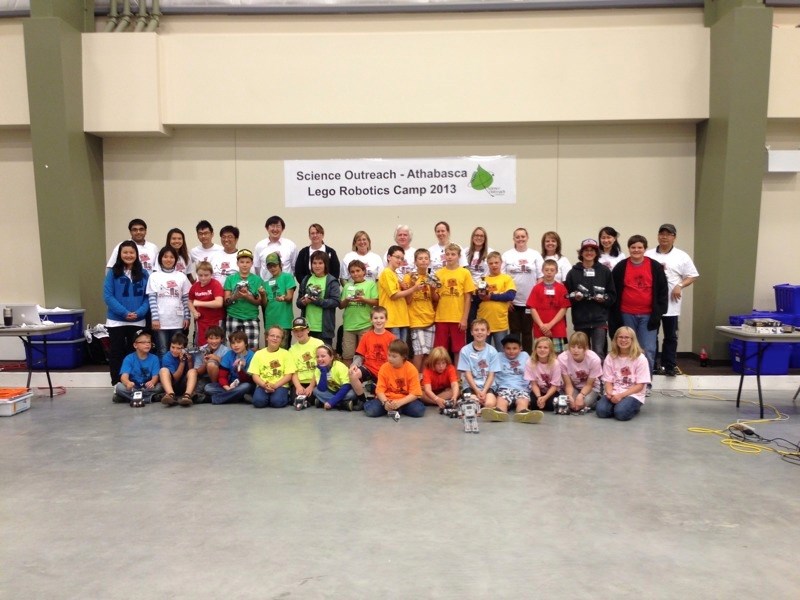Children aged nine to 14 participated in a Lego Robotics Camp Aug. 20 and 21 at the Athabasca Regional Multiplex, as well as a study conducted by Athabasca University’s (AU) School of Computing and Information Systems (SCIS).
Sponsored by Science Outreach – Athabasca and supported by AU’s Faculty of Science and Technology, the camp hosted 27 kids; 10 more were waitlisted.
The children built and programmed Lego Mindstorms robot kits. They raced their robots through the multiplex curling rink last Wednesday.
Colour sensors were installed by the kids to give their robots the ability to “see” lines drawn on strips of tape on the floor and to navigate accordingly.
Campers also took a written test administered by SCIS researchers to determine different age groups’ comprehension of a virtual world computer program.
The program detects the physical movements of a participant pretending to throw a ball. A projection of a stick man mirroring the participant’s arm movements was displayed on a large screen, and the throwing motion triggered the launch of a virtual ball.
Next year, organizers are considering having a “robotics academy” due to the popularity of the camp.
“It’s technology. Science and technology. Those are the types of concepts that we try to integrate,” said AU dean of the Faculty of Science and Technology Lisa Carter, who assisted with the camp.



